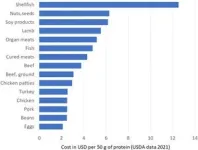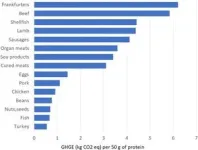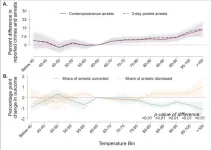A new food systems perspective study1 published in Advances in Nutrition from the University of Washington is the first to explore the place of fresh pork in in the global food sustainability framework.
Merging data on food composition, food trends, prices and incomes, the study concluded that pork meat is an affordable high-quality protein and may have a lower environmental (GHGE) impact than previously believed. The perspective also makes clear pork is well positioned to meet the rising global demand for animal protein.
Pork is one of the most consumed meats globally,2 providing high quality protein and several priority micronutrients. Yes, studies are only beginning to explore the place of pork in dietary patterns in the U.S.
Most large-scale studies on diet quality and health conducted in the U.S. have often treated pork as another red meat. For example, food frequency questionnaires, a common method of finding out what people eat, do not distinguish among different types of red meats.3,4 Epidemiological studies then use food frequency questionnaires to make conclusions about red meat and health outcomes.
The perspective author explains treating pork as a separate and distinct category can draw attention to its high protein content, lower cost, and lower greenhouse gas emissions because pork has a different nutrient profile, protein cost and impact on the environment than other red meats.
Continuing to group red meats together in nutrition and epidemiology research could have food policy consequences and new analyses of pork may be needed to support public health policy around nutrition. “The failure to distinguish between different types of red meat may overlook the unique contribution of pork to the U.S. diet, and that could have implications for the 2025-2030 Dietary Guidelines for Americans,” explains Adam Drewnowski, PhD, Professor of Epidemiology at the University of Washington.
Perspectives on the place of pork in the sustainability framework were identified through a review of the literature, combined with some original analyses, and funded by the National Pork Board.
The food systems analyses relied on publicly available data from the United States Department of Agriculture (USDA), the Food and Agriculture Organization of the United Nations (FAO), and the World Bank, and Dr. Drewnowski examined the place of pork along the dimensions of nutrition, affordability and environmental impact, both domestically and globally.
The take home messages include:
Pork meat is an excellent protein source.
Pork meat is an excellent source of high-quality protein, providing more than 20 grams of protein.
Pork delivers the maximum protein percent daily values (%DV) for the least calories.
Pork has favorable protein quality scores (such as PDCAAS and DIAAS).
Pork meat is an affordable protein source.
Calculations based on pork as a separate category can help determine the cost of affordable nutrition in the U.S.
Pork provides one of the lowest cost ways to reach 100% daily value for dietary protein.
Numerous cuts of fresh pork, including pork chop (baked, broiled, stewed, fried), pork roast, and pork steak/cutlet, were identified by the USDA Center for Nutrition Policy and Promotion as higher nutrient density and lower cost meats.
Pork meat has low greenhouse gas emissions.
Mean GHGE estimates in kg CO2 per 50 grams of protein position fresh pork as significantly below beef and lamb, the other red meats, and closer to eggs, chicken and beans.
Treating pork as a separate category from red meat and applying nutrition-based functional units may re-shape ideas about the environmental cost of animal protein, typically measured in terms of GHGE per product weight or volume (kg or L).
The carbon footprint of pork could be assessed using 100 grams of protein, protein quality scores, or a nutrient density score as a functional unit.
The study also found that an increase in meat consumption is occurring among low- and middle-income countries (LMIC), which includes pork meat. A re-analysis of global FAO and World Bank data confirms that the growing LMIC demand for animal protein was directed mostly toward chicken and pork.
But Dr. Drewnowski explains that the current efforts to promote plant-based diets planetary health diets across LMIC5 could ignore local and territorial preferences, the versatility of animal proteins, the laws of economics (plant-based proteins will be replaced by animal proteins due to economic growth) and food cultures.
“Given the results of this study, it is something of a public health paradox that higher-income countries aim to replace pork with beans, whereas lower-income countries are replacing beans with pork,” adds Dr. Drewnowski. “Animal proteins like pork are one way to address multiple protein and other priority nutrient needs in LMICs,” he suggests.
Insights from the present analyses can help refine the definition of sustainable healthy diets and clarify the role of pork in changing global food demand.
“This perspective makes clear that red meats cannot be treated the same when it comes to recommendations on global sustainable healthy diets. We should be recalibrating our comparisons and paying attention to local contexts and specific food groups,” notes Dr. Drewnowski.
Future nutrition epidemiology studies and food policy recommendations should consider separating pork from other red meats to re-shape ideas about diets and health, and the environmental cost of pork production.
References:
Drewnowski A. Perspective: The place of pork meat in sustainable healthy diets. Advances in Nutrition. 2024;100213.
Meat consumption. OECD website. https://data.oecd.org/agroutput/meat-consumption.htm. Accessed March 20, 2024.
Zheng Y, et al. Association of changes in red meat consumption with total and cause specific mortality among US women and men: Two prospective cohort studies. BMJ. 2019;365:l2110.
Nutrition Assessment. Fred Hutch Cancer Center website. https://www.fredhutch.org/en/research/divisions/public-health-sciences-division/research/nutrition-assessment.html. Accessed March 20, 2024.
Willett W, et al. Food in the Anthropocene: the EAT-Lancet Commission on healthy diets from sustainable food systems. Lancet. 2019;393(10170):447-492.
About National Pork Board:
The National Pork Board has responsibility for Pork Checkoff-funded research, promotion and consumer information projects and for communicating with pork producers and the public. The Pork Checkoff funds national and state programs in consumer education and marketing, retail and foodservice marketing, export market promotion, production improvement, science and technology, swine health, pork safety, and environmental management and sustainability. For the past half century, the U.S. pork industry has delivered on its commitment to sustainable production and has made significant strides in reducing the environmental impact of pig farming. Through a legislative national Pork Checkoff, pork producers invest $0.35 for each $100 value of hogs sold. Importers of pork products contribute a like amount, based on a formula. For information on Checkoff-funded programs, pork producers can call the Pork Checkoff Service Center at (800) 456-7675 or visit www.pork.org.
END





